- RAID
- 11 March 2022 at 09:08 UTC
-

With maxView Storage Manager, you can manage your Microsemi Adaptec SmartRAID controller, arrays, logical drives, cache devices and physical drives through a simple web browser.
But, you can also manage multiple systems (computers / servers) and their Microsemi Adaptec SmartRAID controllers remotely if maxView Storage Manager allows remote connections.
- Install maxView Storage Manager and allowing inbound connections
- Enable automatic discovery of remote systems
- Add a remote system in maxView Storage Manager
- Manage a remote system from maxView Storage Manager
- Remove a remote system
1. Install maxView Storage Manager and allowing inbound connections
When you install maxView Storage Manager, the installation wizard offers to install maxView Storage Manager in standalone mode.
This means that maxView Storage Manager will only be available from the local computer / server via the address : https://localhost:8443/maxview/manager/login.xhtml (or "https://127.0.0.1:8443/maxview/manager/login.xhtml").
To allow incoming connections from another computer / server on the network, you must install maxView Storage Manager by unchecking this box.
If maxView Storage Manager is already installed on the computer / server that you want to manage remotely, uninstall it and reinstall it by unchecking this "Standalone Mode" box.
Info : to manage the controllers of a remote computer / server, maxView can use :
- the Redfish protocol available with version 3 of maxView and whose default port is 8081
- the CIM protocol available with version 2 of maxView and whose default port is 5988
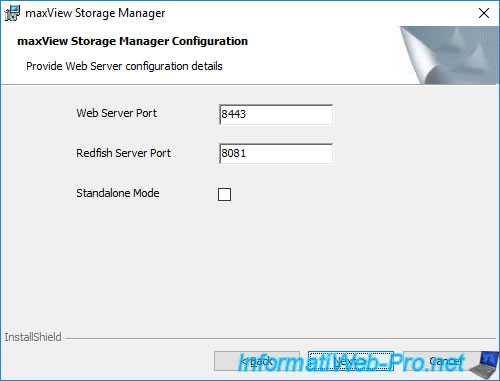
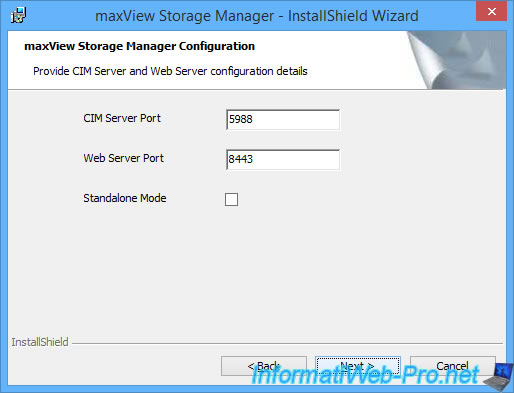
2. Enable automatic discovery of remote systems
To manage multiple systems remotely from maxView Storage Manager, you can use the Auto Discovery of remote systems.
To do this, select "Enterprise View" and click on the 1st icon (System Settings) of the "System" block located at the top of the page.
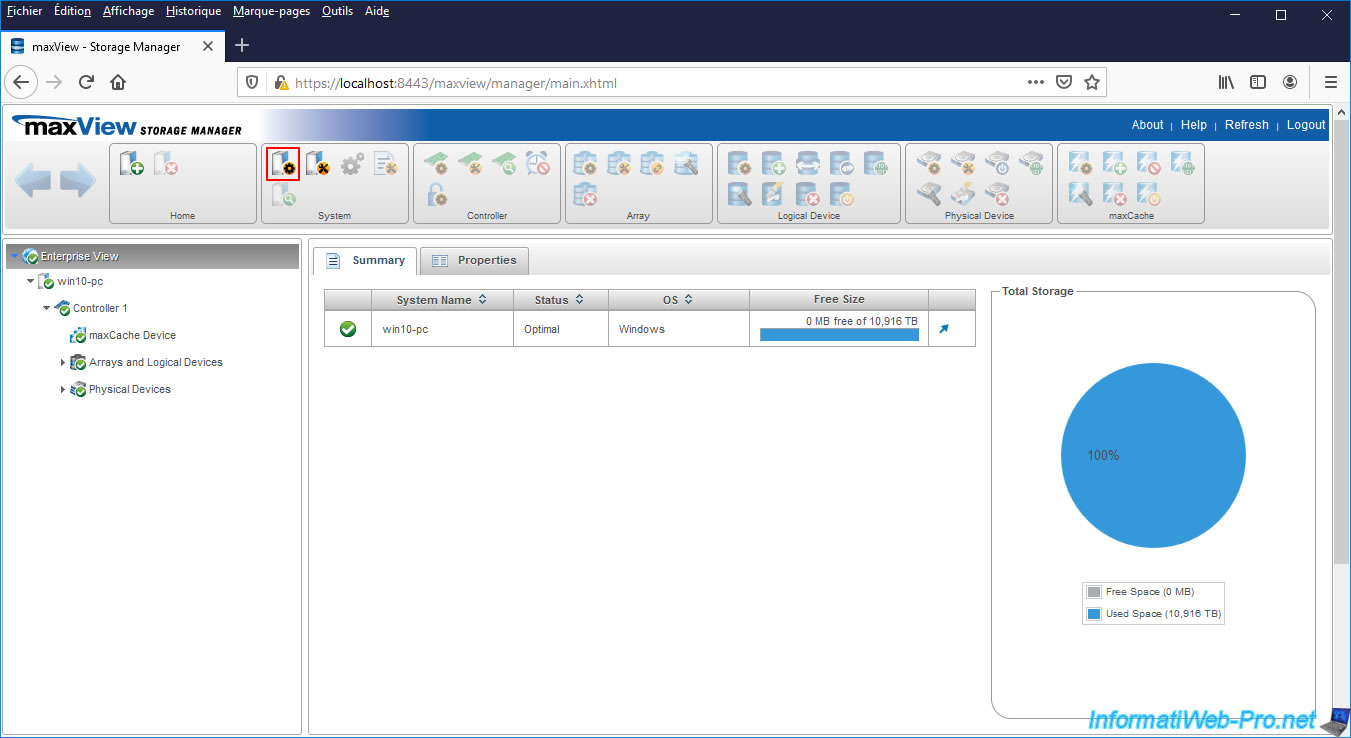
In the "General" tab of the "System Settings" window that appears, check the "Enable Auto Discovery" box and click OK.
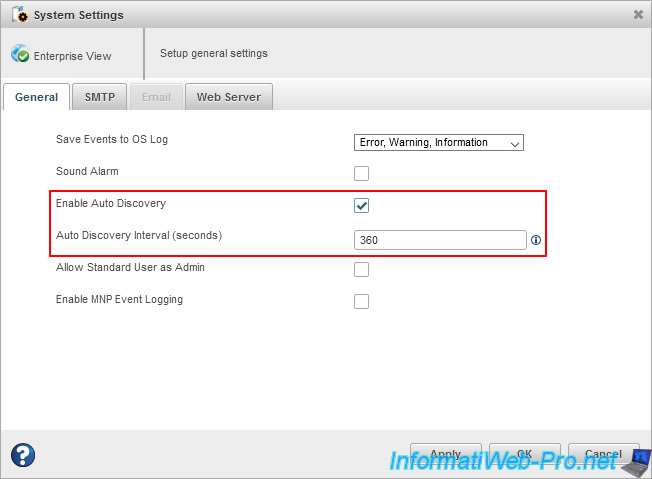
The "Configure notification operation successful" message appears.
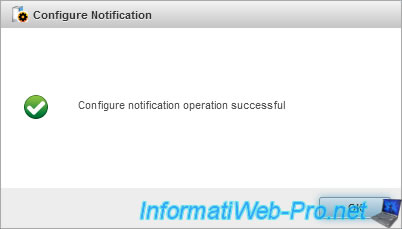
3. Add a remote system in maxView Storage Manager
To manually add a remote system in your "maxView Storage Manager" web interface, click on the "+" icon (Add System) in the "Home" block at the top of the page.
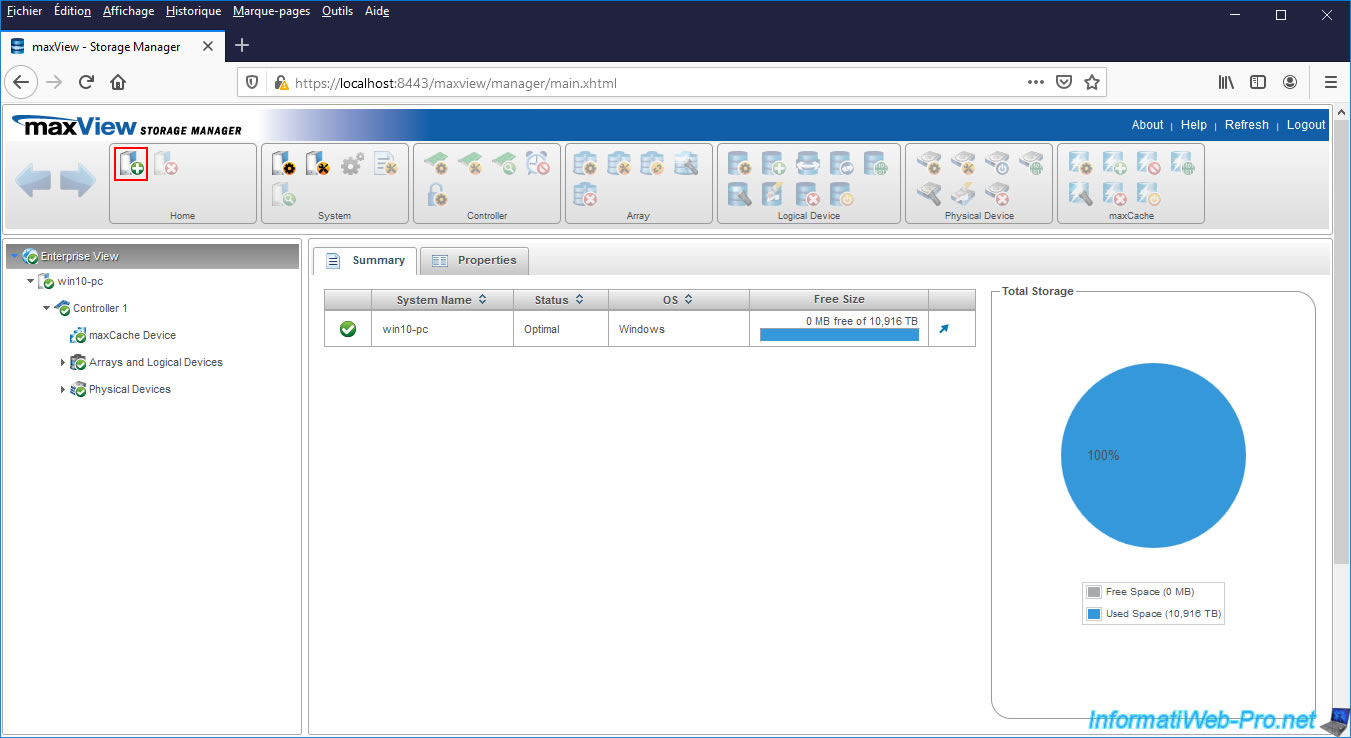
As you can see, to connect to a remote system, you need :
- System Name/IP Address : its name (NETBIOS name on Windows) or its IP address
- User Name : the username of a user with sufficient rights on the remote system to access maxView Storage Manger and manage your Microsemi Adaptec SmartRAID controllers
- Password : his password
- Management Protocol : specify the management protocol to use. Redfish if version 3 of maxView is installed on the remote system or CIM if it's version 2
- Secure : indicate whether to secure the connection
- Port : indicate the port on which to connect on the remote system. Default : 8081 for Redfish protocol or 5988 for CIM protocol
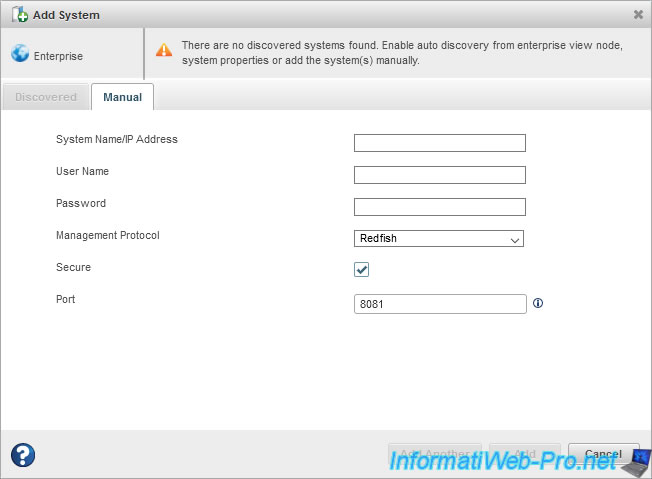
In our case, the remote computer has version 2 of maxView Storage Manager, because it has an old controller (Adaptec RAID 6405) which is not supported by version 3 of maxView.
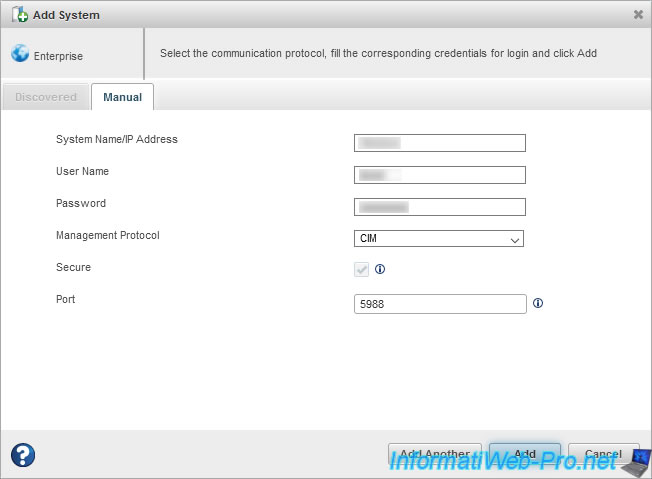
Important : for maxView to be able to connect to the remote system, the port used (80810 TCP or 5988 TCP depending on the protocol used) must be open in the firewall of the remote computer / server.
If necessary, refer to our tutorial : Configure the firewall of your computer
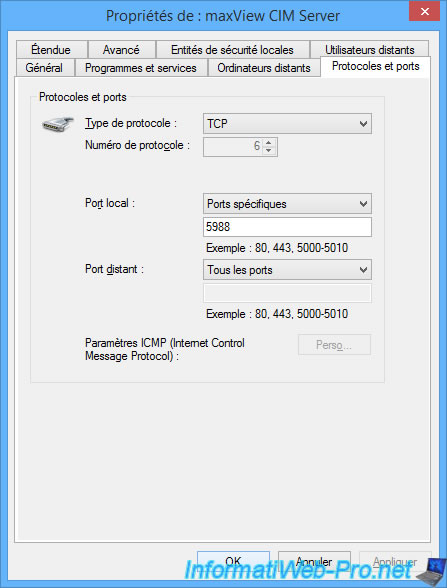
If the connection is successful, the "Add system operation successful" message will appear.
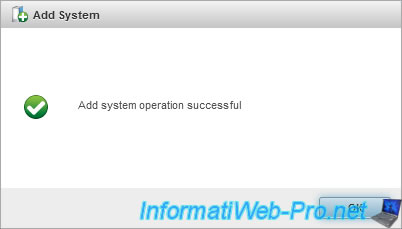
Otherwise, an "Add system failed, server not found" error will appear.
In this case, check that the informations you have entered are correct, that the chosen protocol corresponds to the version of maxView installed on the remote system and that the corresponding port is open in the firewall of the remote system.
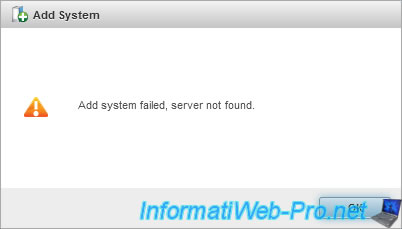
4. Manage a remote system from maxView Storage Manager
As you can see, the added remote system will appear in the list on the left.
If we select this remote system, we can see that it has a controller and its status is "Optimal".
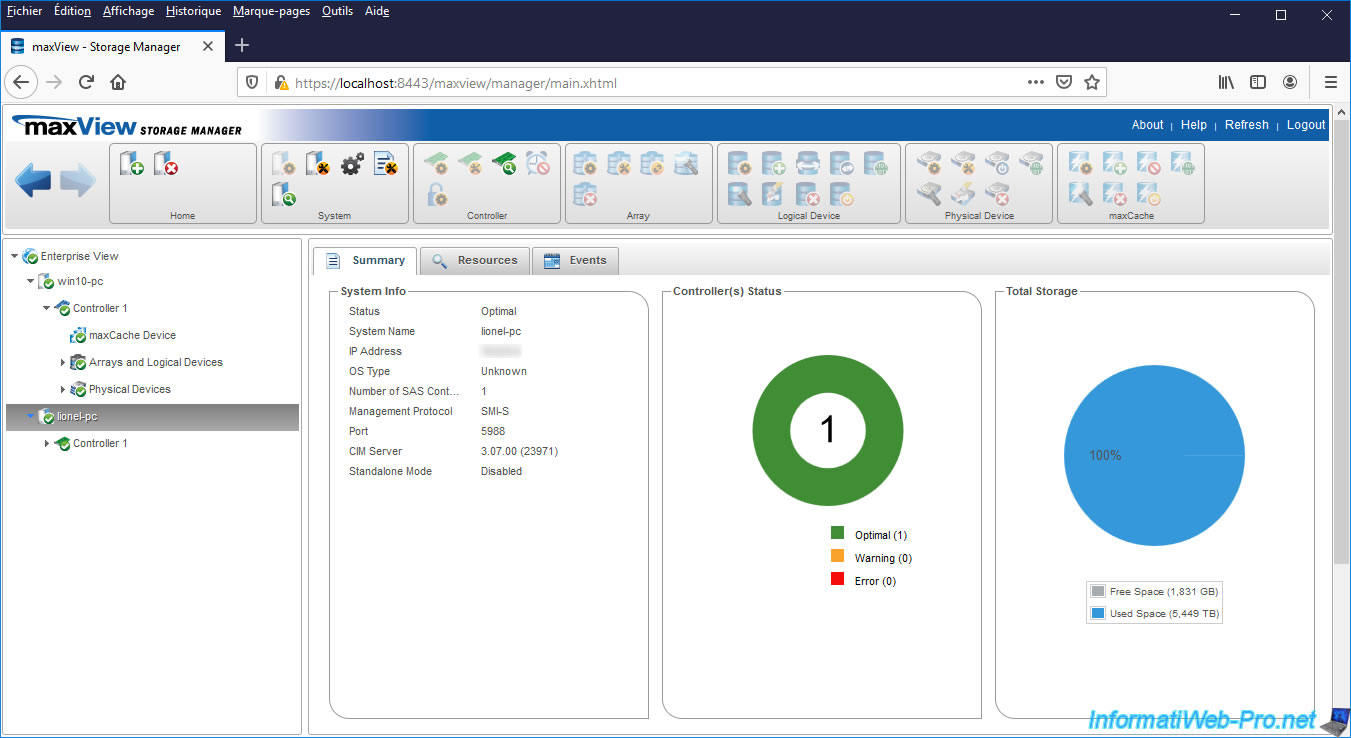
If we select its controller, we can see that it's an old "Adaptec 6405" controller with a logical drive, 3 physical drives, ...
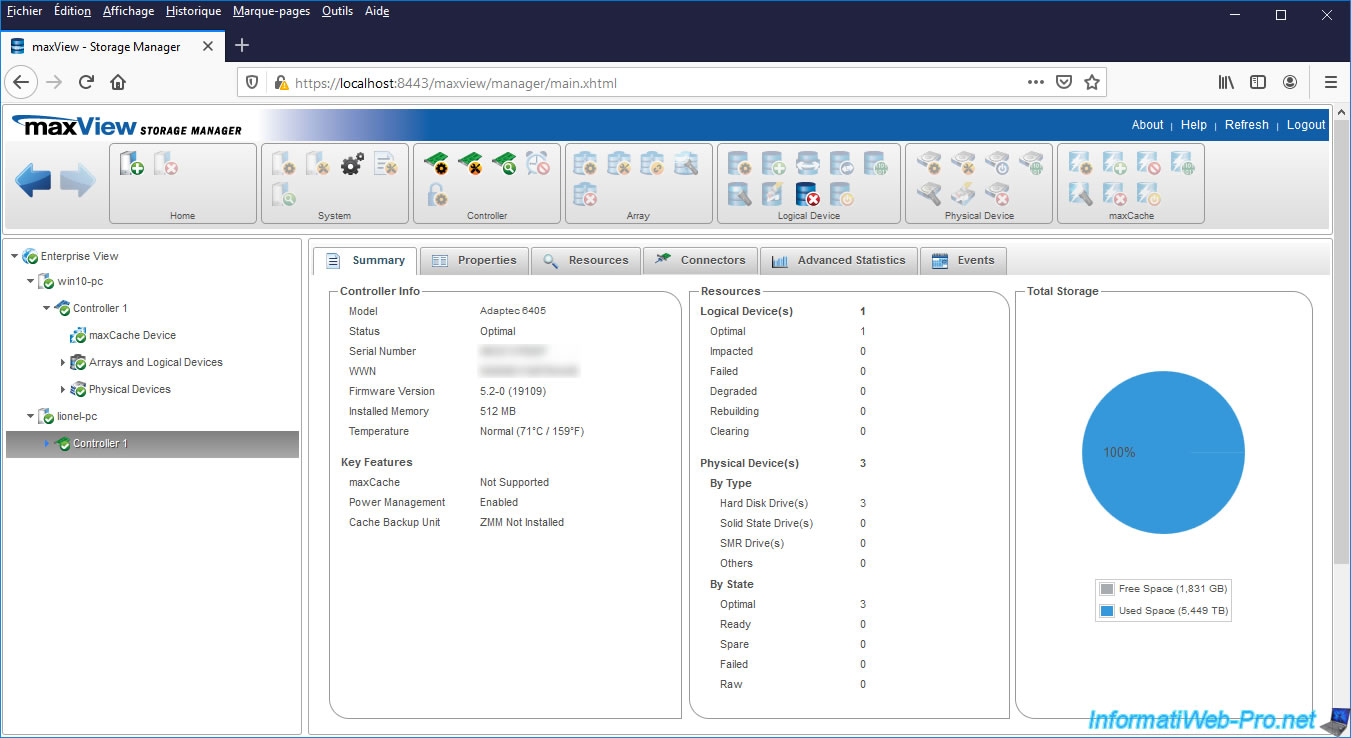
We can also see that the RAID level of the logical drive created on it is RAID 5 and this is called "Virtualization".
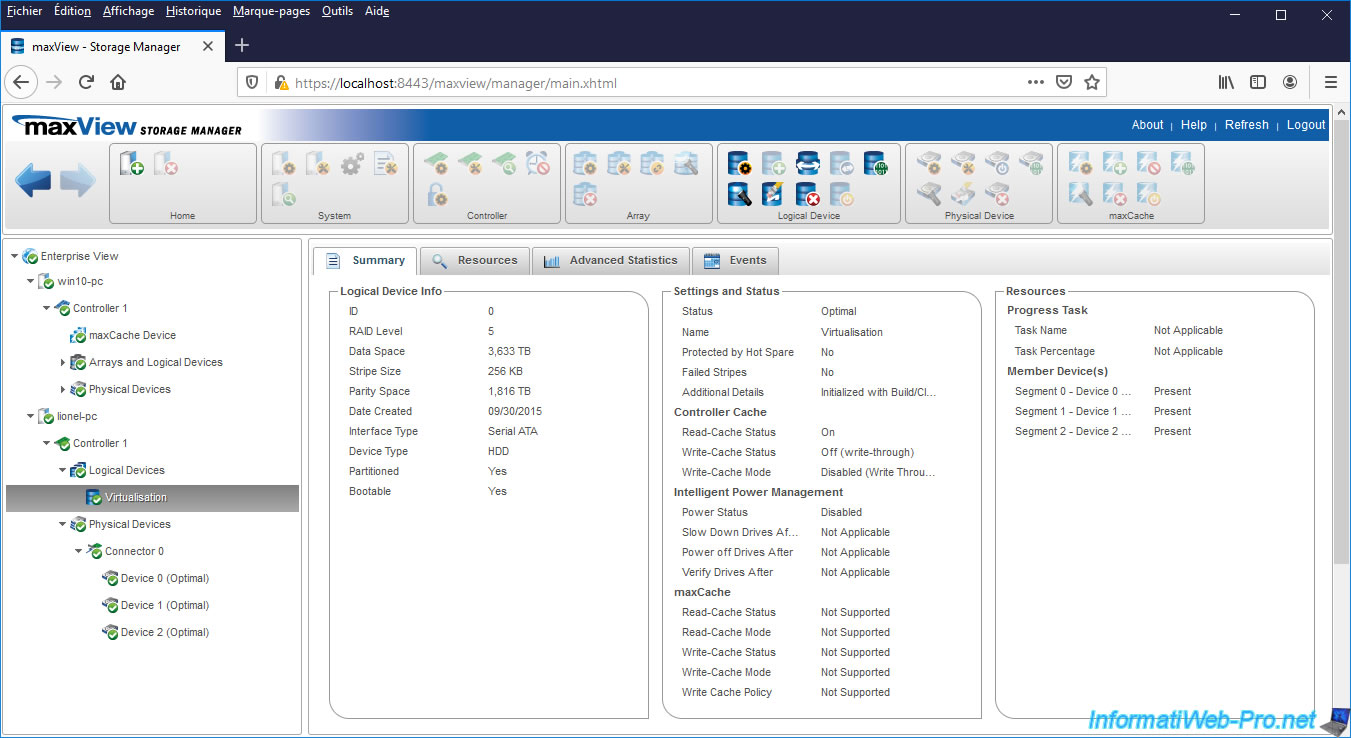
Finally, we can also obtain information about the physical disks connected to the controller present in the remote system.
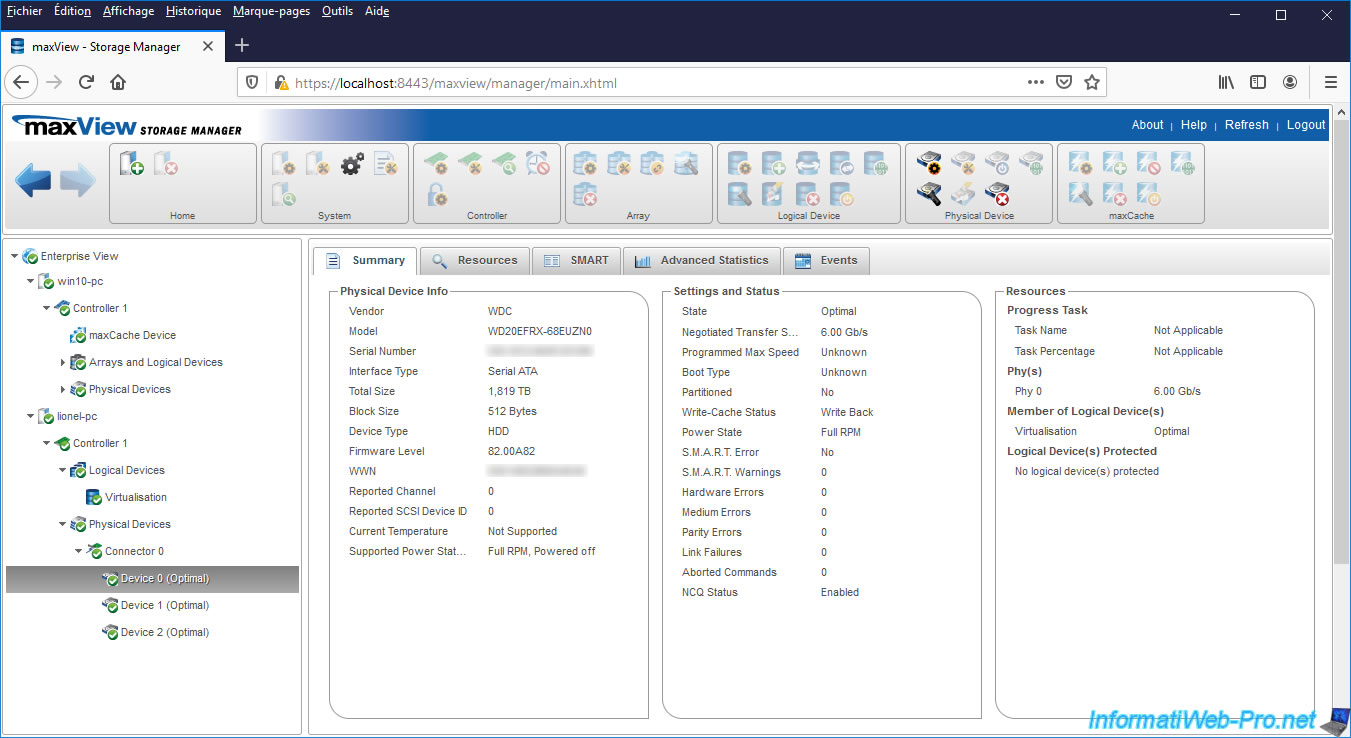
5. Remove a remote system
Later, if you want to remove a remote system from your "maxView Storage Manager" web interface, select it on the left and click on the 2nd icon (Delete System) in the "Home" block at the top of the page.
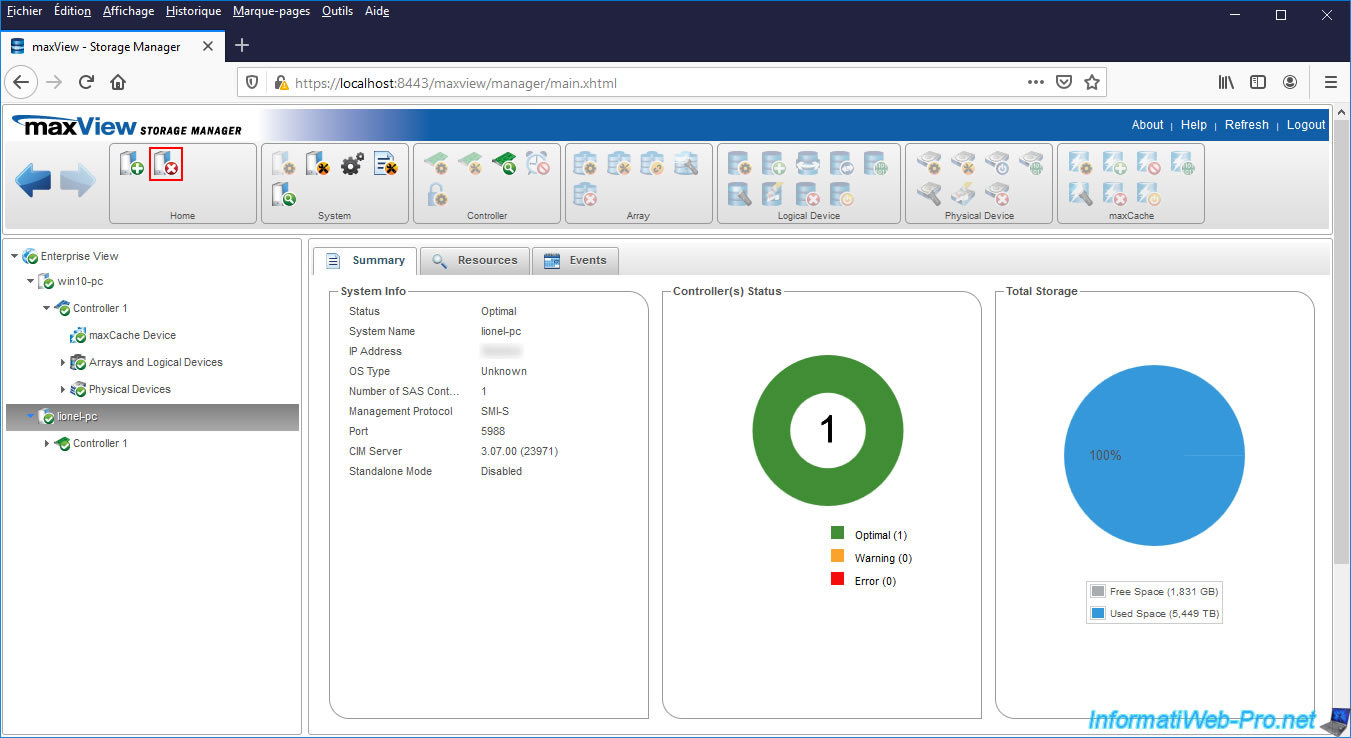
The "Selected remote system will be removed from the maxView management" message will appear.
Click on : Delete.
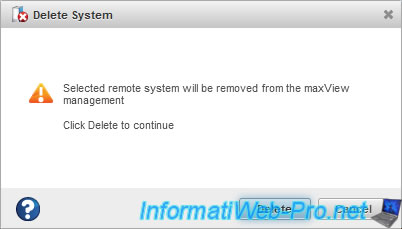
Then, the "Delete system operation successful" message will appear.
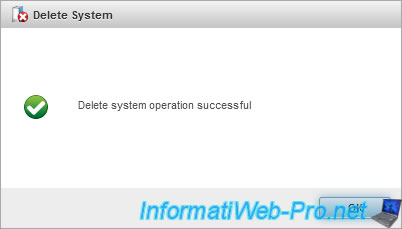
And the remote system will disappear from the maxView list.
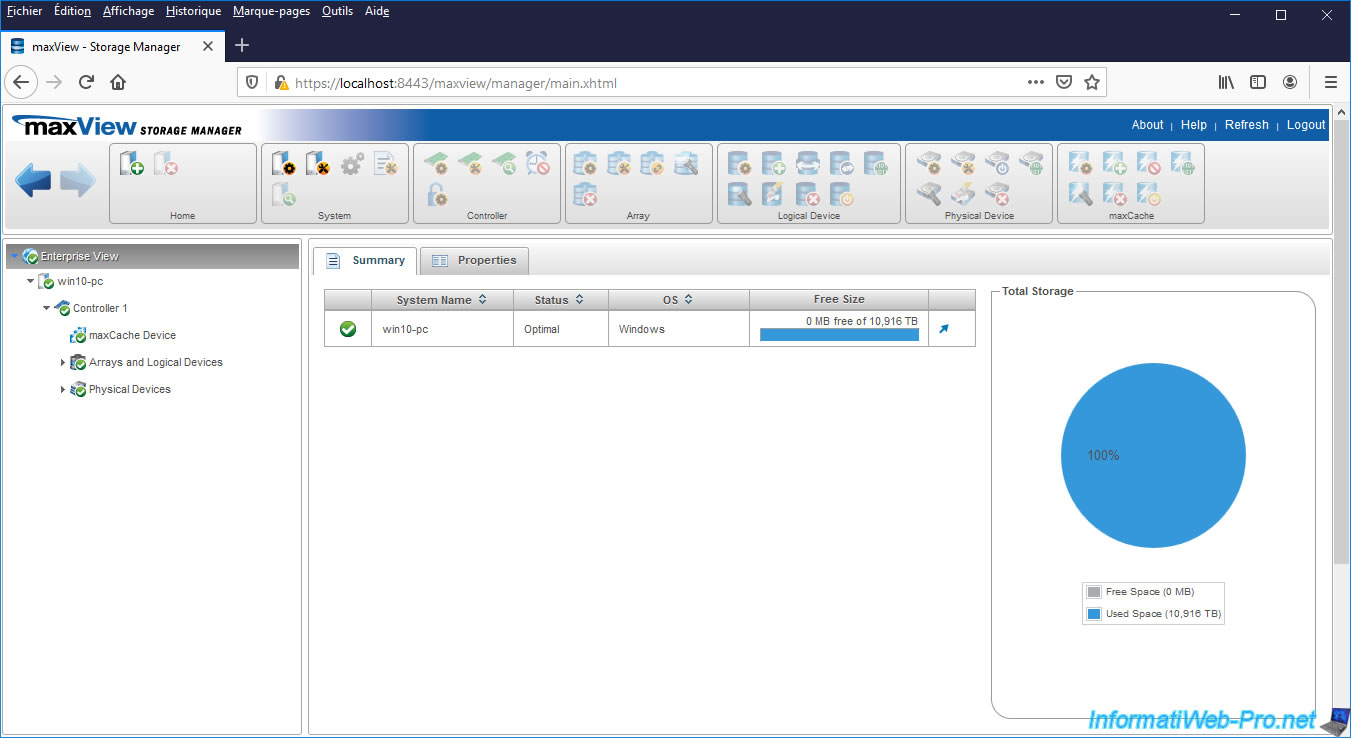
Share this tutorial
To see also
-
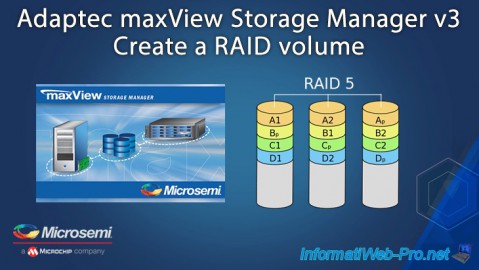
RAID 4/20/2022
Adaptec maxView Storage Manager v3 - Create a RAID volume
-
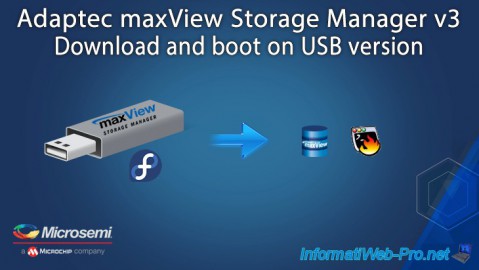
RAID 4/8/2022
Adaptec maxView Storage Manager v3 - Download and boot on USB version
-
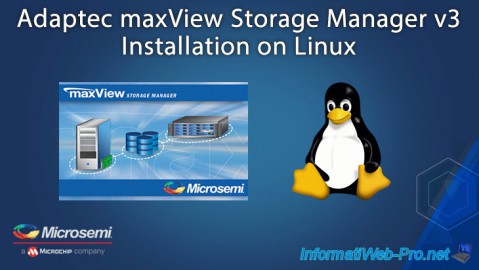
RAID 4/13/2022
Adaptec maxView Storage Manager v3 - Installation on Linux
-
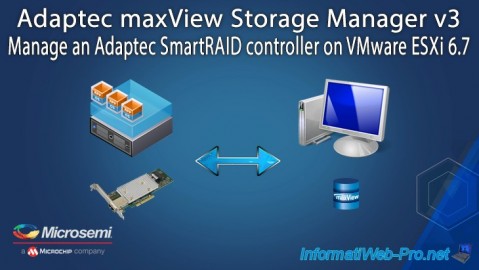
RAID 4/15/2022
Adaptec maxView Storage Manager v3 - Manage an Adaptec SmartRAID controller on VMware ESXi 6.7

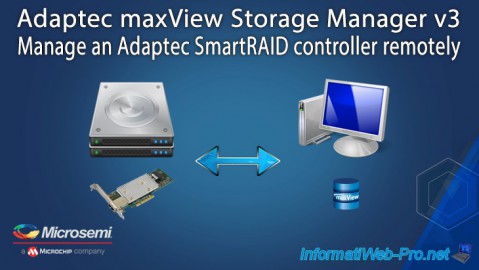
You must be logged in to post a comment